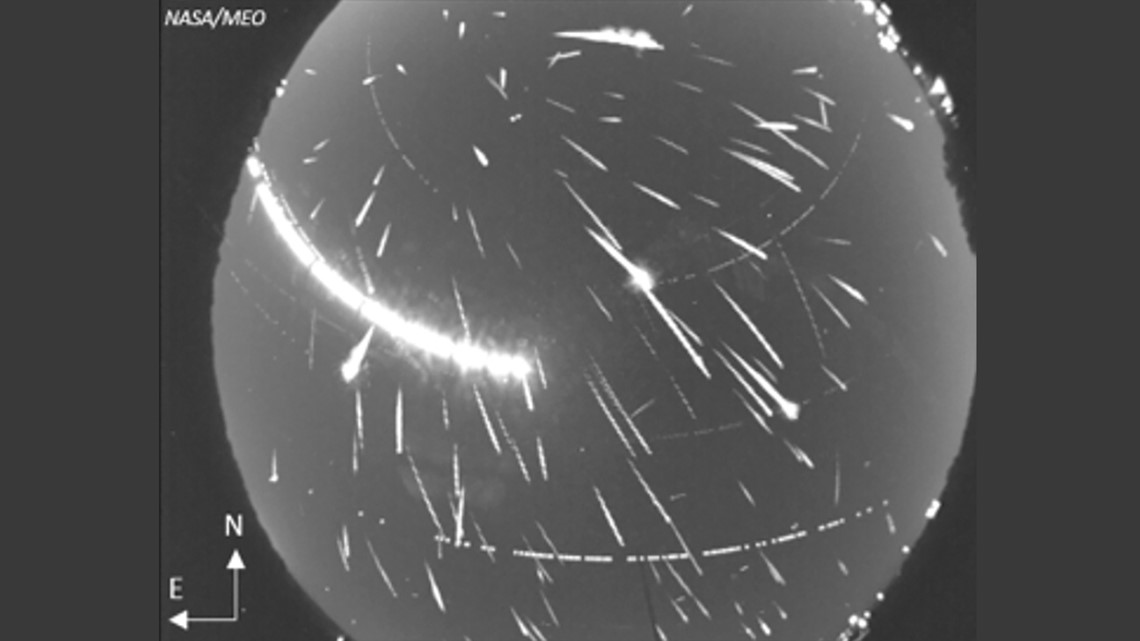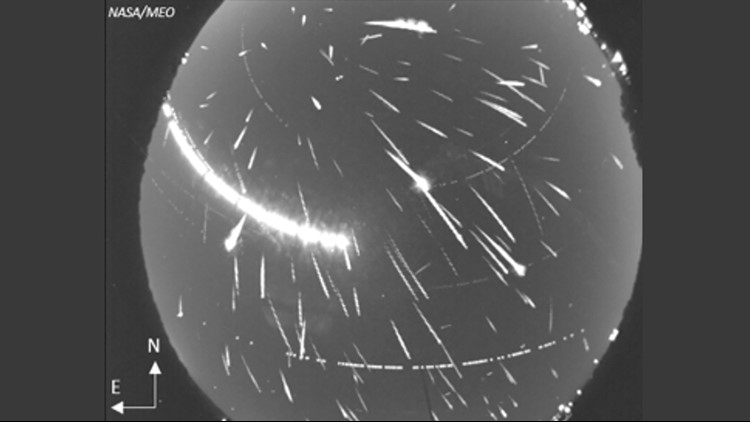HUNTSVILLE, Alabama — The Perseid meteor shower is here and will peak soon.
Perseid meteors, caused by debris left behind by the Comet Swift-Tuttle, began streaking across the skies in late July and will peak on Aug. 12, according to NASA.
The Perseid meteor shower is often considered to be one of the best meteor showers of the year due to its high rates and pleasant late-summer temperatures.
NASA says this year’s shower peak has the added bonus of dark skies courtesy of an early-setting crescent Moon.
Combine these ideal observing conditions and high rates (an average of 60 meteors per hour at the peak) with the fact that the best nights for viewing, Aug. 11-12 and Aug. 12-13, occur on a weekend and you have a recipe for successfully viewing some celestial fireworks, according to NASA.
A live broadcast of the meteor shower from a camera in Huntsville, AL (if our weather cooperates!) will be available on NASA TV and the NASA Meteor Watch Facebook starting around 9:00 p.m. Eastern time (8:00 p.m. CT) and continuing until the early hours of Aug. 13.
To watch the live broadcast, visit the NASA Meteor Watch Facebook page.
When to look:
- Make plans to stay up late or wake up early on the nights of Aug. 11-12 and Aug. 12-13. The Perseids are best seen between about 2:00 a.m. and dawn.
- You can also go out after dark, around 9:00 p.m., and be able to see Perseids. Just know that you won’t see nearly as many as you would, had you gone out during the early morning hours.
- If the weather doesn’t cooperate, a live broadcast of the meteor shower will be streamed on the NASA Meteor Watch Facebook page starting around 8:00 p.m.
Watch: NASA - Perseids Are Already Zipping Across the Sky
Whey they are called Perseids:
- All meteors associated with one particular shower have similar orbits, and they all appear to come from the same place in the sky, called the radiant.
- Meteor showers take their name from the location of the radiant. The Perseid radiant is in the constellation Perseus.
NASA/MEO
Most of the meteors seen in the composite below are Perseids. Notice how they all appear to be streaking from the same direction? The Perseids appear to radiate from a point in the constellation Perseus.


How to Observe Perseids:
- If it’s not cloudy, pick an observing spot away from bright lights, lay on your back, and look up. You can view the Perseids with your eyes and no special equipment is needed.
- Telescopes and binoculars are actually not recommended.
- Meteors can generally be seen all over the sky so don’t worry about looking in any particular direction.
- While observing this month, not all of the meteors you’ll see belong to the Perseid meteor shower.
How to tell if you’ve seen a Perseid:
- If you see a meteor try to trace it backward. If you end up in the constellation Perseus, there’s a good chance you’ve seen a Perseid.
- Perseids are some of the fastest meteors you’ll see
NASA pro tip:
Remember to let your eyes become adjusted to the dark, which takes about 30 minutes. You’ll see more meteors that way. Try to stay off of your phone too, as looking at devices with bright screens will negatively affect your night vision and hence reduce the number of meteors you see.
Watch: NASA meteor watch - Animation of Michigan fireball orbit
The animation in the above video shows the orbit of the small asteroid that caused the Michigan fireball, and also gives the meteor's perspective as it plunged to Earth.
Astronaut Ron Garan photographed this Perseid meteor on Aug. 13, 2011, as the International Space Station passed over China. The bright star Arcturus in the constellation of Bootes is visible just above and left of the meteor, which was moving at 134,000 mph as it plunged into Earth's atmosphere, according to NASA.


